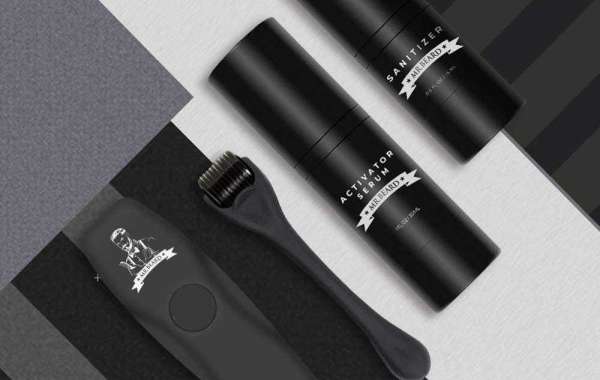Trigger Point Massage is a specialized technique aimed at relieving muscle knots, tension, and pain. By applying pressure to specific points on the body known as "trigger points," this therapy targets muscle fibers that have contracted and become tight. These points, often located deep within the muscle tissue, can cause localized or referred pain. Trigger point massage works by deactivating these points, helping to restore normal muscle function and alleviate discomfort.
The Science Behind Trigger Points
Trigger points, often referred to as "muscle knots," are hyper-irritable spots within the muscle or fascia. These spots become painful when compressed and can radiate discomfort to other areas of the body. The science behind trigger points suggests that they form when muscles are overworked or strained, often due to repetitive motions, poor posture, or stress. The muscle fibers contract, creating a tight "knot" that can disrupt circulation and prevent the muscle from relaxing properly.
How Trigger Point Massage Works
Trigger Point Massage works by applying sustained pressure to the trigger points. This pressure helps to break up the tightness, release muscle spasms, and improve blood flow to the area. The therapist may use their fingers, elbows, or other tools to target these specific points. The goal is not to cause pain but to induce a therapeutic release, which results in improved flexibility, reduced muscle tension, and a significant decrease in discomfort.
Benefits of Trigger Point Massage
1. Pain Relief
The primary benefit of Trigger Point Massage is its ability to relieve chronic pain. Whether you're dealing with lower back pain, neck stiffness, or headaches, this therapy can effectively target the root cause of your discomfort. By releasing the tension in your muscles, trigger point therapy promotes healing and reduces pain over time.
2. Enhanced Flexibility and Mobility
Trigger point therapy helps to loosen tight muscles, which can improve flexibility and range of motion. People suffering from stiffness or limited mobility due to muscle knots often experience a noticeable difference after just one or two sessions. This increased flexibility makes it easier to move freely and perform everyday tasks without discomfort.
3. Reduced Stress and Tension
Muscle knots are often a result of stress, both physical and emotional. Trigger Point Massage not only relieves the tension in the muscles but also promotes relaxation throughout the body. By stimulating the parasympathetic nervous system, trigger point therapy can help to calm the mind and reduce stress levels.
4. Improved Circulation
By applying pressure to the trigger points, massage therapists can stimulate blood flow to the affected areas. This improved circulation allows the muscles to receive more oxygen and nutrients, speeding up the recovery process and reducing muscle fatigue.
5. Headache Relief
Many people suffer from tension headaches caused by tightness in the muscles of the neck and shoulders. Trigger point massage can target the underlying muscular issues that contribute to headache pain. By releasing tension in these areas, trigger point therapy can provide significant relief from both acute and chronic headaches.
Trigger Point Massage vs. Other Massage Techniques
Trigger Point Massage vs. Swedish Massage
While both trigger point massage and Swedish massage involve hands-on techniques to alleviate muscle tension, the approach and goals are different. Swedish massage is generally more relaxing and involves long, flowing strokes designed to promote overall relaxation and increase circulation. In contrast, Trigger Point Massage is more focused and intense, targeting specific points of pain and tightness to release muscle knots and relieve deep-seated tension.
Trigger Point Massage vs. Deep Tissue Massage
Deep tissue massage works to target the deeper layers of muscle and fascia, aiming to break up tension and adhesions. Trigger Point Massage, however, is more focused on isolated points of tension, applying direct pressure to "knots" that cause localized or referred pain. While deep tissue massage can sometimes overlap with trigger point therapy, the latter is often more precise in its approach to relieving specific muscle knots.
How to Prepare for a Trigger Point Massage
To get the most benefit from a Trigger Point Massage, it's important to prepare both physically and mentally for the session. Here are a few tips:
Hydrate: Drink plenty of water before and after your session. Hydration helps to flush out toxins that are released during the massage.
Communicate: Let your massage therapist know about any areas of tension or pain you're experiencing. The more specific you can be, the more effective the session will be.
Relax: While Trigger Point Massage can be intense, it's important to stay relaxed and breathe deeply. This will help the therapist target the trigger points more effectively.
Aftercare: What to Expect After a Trigger Point Massage
After a Trigger Point Massage, you may experience some soreness in the treated areas. This is normal and should subside within 24-48 hours. It’s important to continue hydrating after the session to aid in muscle recovery. You may also want to stretch gently to maintain flexibility and avoid stiffness. If you have any concerns or if the soreness persists for longer than expected, it’s a good idea to consult with your therapist.
Who Can Benefit from Trigger Point Massage?
Trigger Point Massage can benefit anyone who experiences chronic muscle tension or pain, particularly those who engage in physical labor, athletes, or individuals with sedentary lifestyles. It's also effective for people suffering from conditions such as:
Fibromyalgia
Chronic neck and back pain
Tension headaches
Repetitive strain injuries
Sciatica
Carpal tunnel syndrome
Anyone dealing with muscle tightness, stress, or discomfort can find relief through Trigger Point Massage.
Conclusion: Is Trigger Point Massage Right for You?
If you’re dealing with chronic pain or muscle tightness, Trigger Point Massage may be the key to your recovery. Its targeted approach to releasing muscle knots can provide fast and effective relief from pain, enhance mobility, and reduce stress. Whether you’re seeking relief from tension headaches, back pain, or simply looking to improve your overall well-being, this massage therapy offers a holistic solution for those seeking lasting pain management.
Consulting with a qualified massage therapist can help you determine if Trigger Point Massage is the right choice for your needs. Don’t let muscle tension control your life—take the first step toward healing today!










